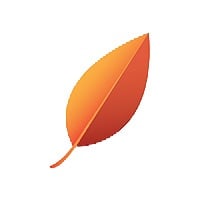Do you find when working through the critical reading sections that two or more answer choices could work? Do you typically do well in science and math classes, but have a harder time with verbal sections? If so, you could be a mathematical reader. Mathematical readers typically don’t struggle when it comes to reading the passage, but have a hard time deciding between two answer choices. If you think you may be struggling due to being a mathematical reader, follow these three tips to make sure you are performing as well on the critical reading section as you can.
1. Translate answer choices
One of the biggest problems mathematically oriented students face when approaching the SAT critical reading section is the tendency of the SAT to use broad, vague words in the correct answer choice. Furthermore, the SAT will use specific references from the passage in the incorrect answer choices.
For example, if a passage is discussing the impact of blogging on journalism, the incorrect answer choice will say something to the effect of “pointing out journalists’ favorite blogs". The correct answer, however, will say something to the effect of “analyzing the effect of a phenomenon”. Mathematically minded individuals will recognize words used from the passage in an answer choice, but don’t look closely enough to see that the answer choice is using the RIGHT word in the WRONG way. Working with a tutor who can teach you to translate what you are looking for from an answer choice into an “SAT answer choice” should be helpful for not only identifying the correct answer, but also eliminating those attractor answer choices.
2. Learn common error types:
The most effective tool mathematically oriented students can learn for approaching the SAT critical reading section is to identify the 10 common error types associated with incorrect SAT answer choices. Because the SAT is a standardized test, it must follow the same rubric each test when creating questions and answers.
While finding the correct answer depends on the passage, the SAT uses the same standards for creating the wrong answers. Working with patterns and standardized error types is a way for mathematically minded students to take the critical reading section from a random, subjective exercise into an objective exercise with rules that must be followed. This makes critical reading more like math, and should exponentially help math minded students come test day.
3. Learn “reading vocabulary”
Oftentimes understanding the EXACT meaning of a “reading” vocabulary word can help a student decide between two answer choices.
Do you know the difference between:
The answer choices: “defend a methodology” and “promote a methodology”?
Or the answer choices “lament the demise of a theory” and “dispute the demise of a theory”?
In order for “defend a methodology” to be correct, there must be an attack on the methodology that the author is responding to. In order for “lament the demise of a theory” to be correct, the author must be experiencing a “powerful expression of grief”, not be merely academically opposed to it. Understanding these distinctions makes eliminating answer choices (and deciding between those last two) much easier. Working with a tutor who knows the common “reading vocabulary” words that are used incorrectly should make solving these critical reading questions even easier.






